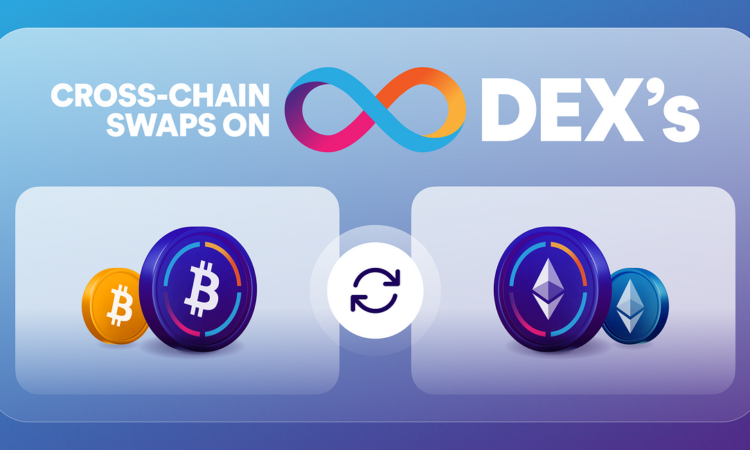
In the rapidly evolving world of decentralized finance (DeFi), efficiency and flexibility are crucial to success. The concept of cross-chain swaps has emerged as a game-changer, allowing users to exchange assets across different blockchain networks seamlessly. This innovation is transforming how traders, investors, and everyday users interact with their crypto assets, unlocking new opportunities in DeFi. For platforms offering smart wallets equipped with cross-chain swap capabilities, the future looks even more promising, as users gain access to a new level of financial autonomy and security.
Breaking Down Barriers Between Blockchains
Traditionally, users who wanted to exchange assets across different blockchain ecosystems had to rely on centralized exchanges. This approach came with several downsides, including higher fees, security risks, and a loss of control over assets during the transaction process. Cross-chain swaps change this dynamic entirely by allowing peer-to-peer asset exchanges directly between blockchains, eliminating the need for an intermediary.
For DeFi users, this means more freedom and flexibility. They can seamlessly trade tokens from one blockchain to another without worrying about centralized exchange restrictions or waiting for long transaction times. The ability to move between different networks—such as Ethereum, Binance Smart Chain, or Polygon—means users can access the best opportunities across the ecosystem, whether it’s for trading, yield farming, or staking.
Enhancing Liquidity and Investment Strategies
One of the most significant impacts of cross-chain swaps in DeFi is the increased liquidity they bring to the table. As more users can move their assets freely between blockchains, liquidity pools become more robust, leading to a healthier, more efficient DeFi market. This enhanced liquidity benefits not only individual users but also the broader ecosystem, helping to reduce slippage and make markets more competitive.
For users of smart wallets that offer cross-chain swap functionality, these advantages are magnified. By allowing effortless movement of assets between chains, these wallets open the door to more advanced investment strategies. Imagine a scenario where a user can move funds from one blockchain to another to take advantage of auto compound yield farming without the need for multiple transactions or navigating through multiple interfaces. This kind of seamless asset management is what cross-chain swaps make possible, allowing users to optimize their returns while minimizing time and complexity.
Auto Compound Yield Farming: A Boost to Efficiency
Auto-compound yield farming is one of the most popular ways to maximize returns in DeFi. It involves automatically reinvesting the earnings from liquidity pools back into the same pool, compounding returns over time. The challenge for many users, however, has been the fragmentation of opportunities across different blockchains.
Cross-chain swaps simplify the process significantly. Instead of being locked into yield farming opportunities on a single blockchain, users can now move their assets freely across chains to participate in the best available pools. This opens up a whole new world of possibilities for yield farmers who want to maximize their earnings without being restricted by network barriers. With smart wallets integrating auto compound features and cross-chain capabilities, yield farming becomes more efficient, less time-consuming, and more profitable.
Security and Control with Self-Custodial Wallets
One of the main concerns for DeFi users is security, and rightly so. Traditional centralized exchanges have been vulnerable to hacks, fraud, and other security breaches, often leaving users out of pocket. Cross-chain swaps performed through self-custodial wallets address this issue head-on.
With a self-custodial wallet, the user retains complete control of their private keys and assets at all times. This security model ensures that assets remain safe during cross-chain swaps, eliminating the need to trust a third party with custody. Furthermore, smart wallets offering easy recovery options add an extra layer of safety, helping users regain access to their assets if something goes wrong.
For users looking to safeguard their digital assets, cross-chain swaps via self-custodial wallets represent the best of both worlds: high security and the flexibility to engage in the broader DeFi landscape. No more worrying about centralized control or losing access to assets due to external factors. Everything is in the hands of the user.
Redefining Gas Fees: A Smoother Transaction Experience
Another common hurdle in DeFi is dealing with gas fees, which vary significantly across different blockchains. A smart wallet that allows users to pay gas fees using any token is a major step forward in simplifying DeFi interactions. Instead of scrambling to ensure you have the right token to cover fees, this feature enables a more streamlined and user-friendly experience.
Combined with cross-chain swaps, this functionality allows users to move assets across chains without the frustration of managing different native tokens for transaction fees. The ability to pay gas fees using any token adds another layer of convenience, making DeFi interactions more fluid and accessible to users of all levels.
Final Thoughts
Cross-chain swaps are a groundbreaking development in decentralized finance, bringing unparalleled flexibility, liquidity, and security to users. By combining these swaps with features like self-custodial wallets, auto-compound yield farming, and gas fee payments in any token, DeFi platforms are setting the stage for a more accessible and efficient financial future. As this technology continues to evolve, users will find themselves at the forefront of a decentralized financial revolution, where they have full control over their assets, investment strategies, and financial security.




